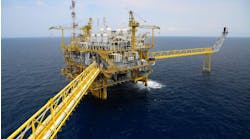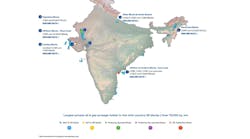Long-distance subsea tiebacks generally demand some form of pressure boost to push the wellstream toward the host platform. Reservoir "weakness" is a concern of deepwater operators in West Africa and Brazil in particular.
One of the likelier solutions under review involves placing multiphase or centrifugal pumps on the seabed, at depths ranging from 600 to 3,000 m. According to Voith Turbo, most recent studies involve use of variable-speed drives for deepwater pumping applications. These are needed to manage variations in well pressure and flow, and also the composition of the wellstream (oil/gas/water), which differs from field to field.
Voith's latest offering in this regard is a subsea variable-speed drive, operating between a fixed-speed motor and the subsea pump (twin-screw or rotodynamic). The drive is designed to transmit up to 10MW through an in-built hydrodynamic torque converter. This is a hydrodynamic transmission device that varies steplessly torque and speeds between their input and output shafts.
null
According to Voith, the focal point of this technology is a hydrodynamic circuit comprising a pump, turbine, and guide wheel with adjustable guide vanes. The motor's mechanical energy is converted into hydrodynamic energy via the pump wheel. In the turbine wheel, this same hydrodynamic energy is re-converted to mechanical energy, which is then transmitted to the output shaft.
Adjustable guide vanes regulate the mass flow and its direction in this hydrodynamic cir- cuit. With closed guide vanes (small mass flow), the power transmission is minimal, while with the guide vanes fully open (large mass flow), it is maximal. To counter changes in mass flow, the turbine wheel's speed is variable, and can be adjusted to match the different speeds required for the (multiphase) pump. The torque converters' torque output can also be varied, or even raised, to manage starting, breakaway, or emergency situations.
Voith says its new drives provide numerous other advantages, including high reliability and availability, low space and maintenance requirements, no overload of the drive motor during operation, and a high value of breakaway torque for the pump.




